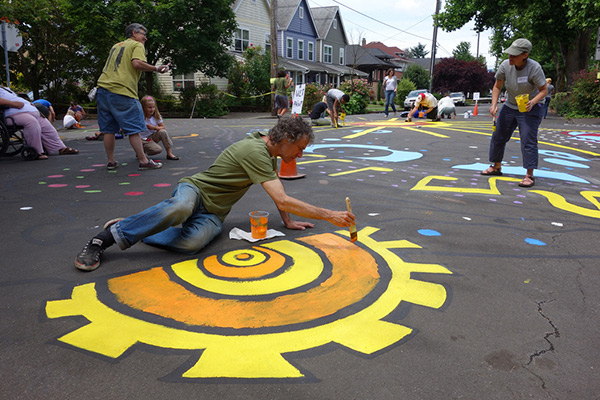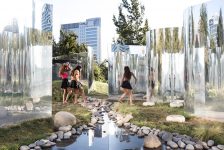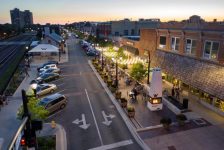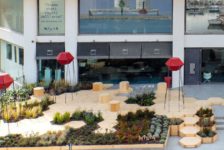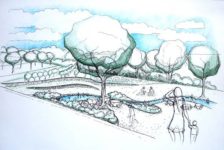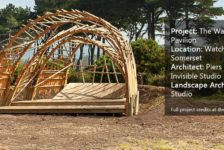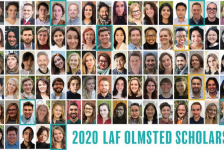On a mild, misty afternoon, cyclists, pedestrians, kids, and adults embark on a journey through their neighborhoods. However, these neighborhoods have a “special” feel. I often find it difficult to describe to visitors, but I always welcome them to experience this resounding aura in Portland, Oregon.
What is City Repair?
City Repair is a community-organized group based in Portland that instills knowledge, inspiration, and creativity in individuals and communities in an effort to transform their neighborhoods (City Repair). This group began with the idea that local values of culture, economy, and decision-making promote sustainability and establish community-oriented places. During each year, City Repair takes part in several largely volunteer-driven projects, including natural building, permaculture, and public art. Its largest project occurs over a period of 10 days (this year it’s slated for May 23 to June 1, 2014) called the Village Building Convergence.
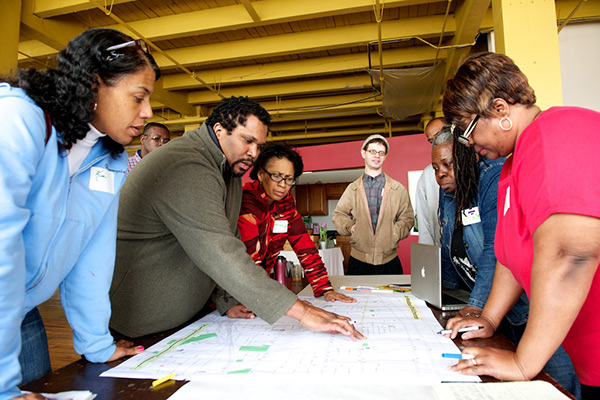
A design workshop is underway from City Repair Cleveland. More than 40 cities have embraced the concept | credit: City Repair
What is Tactical Urbanism?
Tactical urbanism is defined as small-scale improvements in an effort to effect large-scale, long-term change. This concept allows the design to be tested before allocating substantial political and financial commitments (Tactical Urbanism Volume II 1). In addition, tactical urbanism serves as a vehicle for generating public interest and facilitating creative solutions to immediate small-scale problems. The growth of tactical urbanism is credited to the recession, shifting demographics, and the use of the Internet as a tool for building the civic economy (Tactical Urbanism II 2-3). Strategic interventions known as city repair can also be referred to as tactical urbanism. While the term tactical urbanism is still in its infancy stages, it’s important to mention that it’s gaining traction.
What is Placemaking?
Similarly, placemaking is defined by City Repair as “a multi-layered process within which citizens foster active, engaged relationships to the spaces which they inhabit, the landscapes of their lives, and shape those spaces in a way which creates a sense of communal stewardship and lived connection” (Village Builder 4).
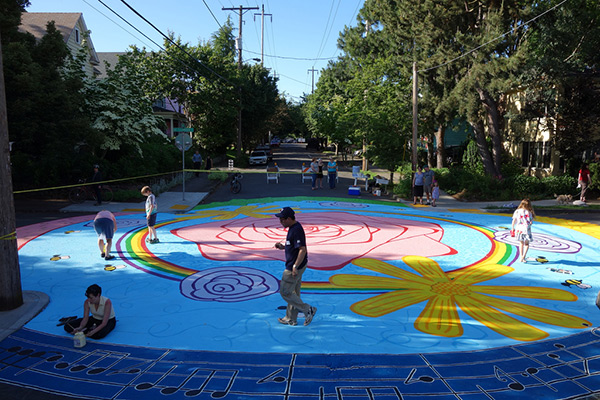
Intersection repair at NE Rodney & Tillamook honoring the identity of Portland as “The City of Roses” | credit: City Repair
A Strong Case for Community Engagement
The Loveleigh neighborhood is a strong case in point. Due to newly planted trees, bike lanes, and a growing engaged community, it has seen a spark of new families, homes, and ideas. To further its growing civic involvement, street art designed as a rose has been proposed for this year’s Village Building Convergence and is intended to serve as a compass. Complementary to the neighborhood’s previous projects, this art will be a constant reminder that the community is getting stronger each day.
Portland has been recognized for its public transportation network, environmentally friendly initiatives, microbreweries, food carts, and vibrant bicycle culture. Yet, I believe its strong, well-connected neighborhoods serve as the foundation for Portland’s residents and growing creative class. Next time you are visiting the Pacific Northwest, I hope you have time to pay Portland a visit. Then you will have the opportunity to experience that “special” neighborhood feel, the feel that so many Portlanders have grown to love amidst the drippy weather. A special thank you to Mark Lakeman (Co-founder of City Repair) for his time in contributing to this article. Article written by Brett LezonThis article was originally submitted to Landscape Architects Network
Published in Blog


